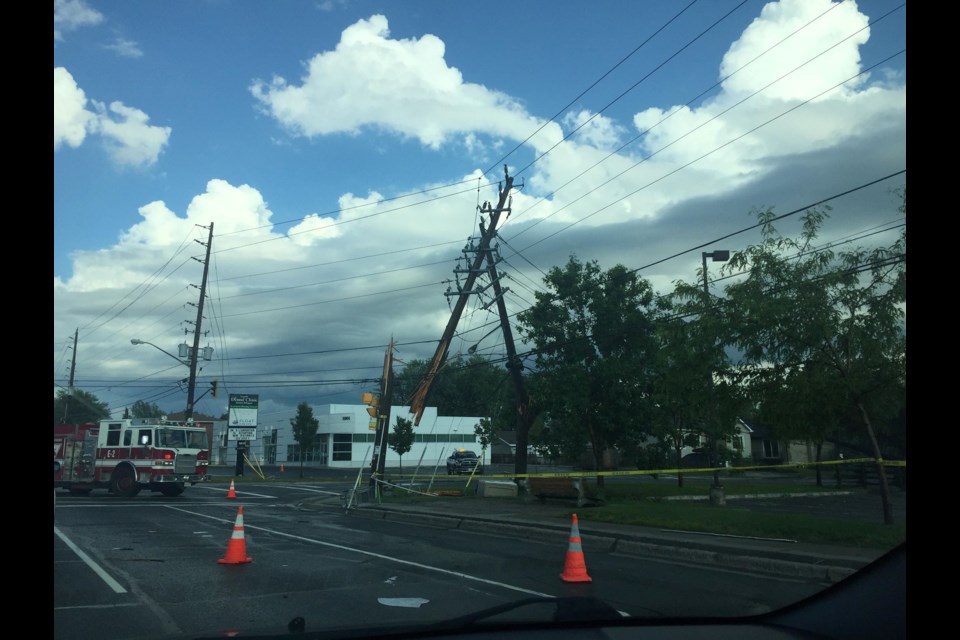SUDBURY — The summer storm that downed trees and power lines in New Sudbury and left thousands without power Monday evening was a downburst, according to Environment Canada.
“Our meteorologists, they were looking at the archive radar today, checking back at what happened, and it seemed like from the radar echoes that it was a downburst,” said meteorologist Gerald Cheng.
“A downburst is basically a very strong wind that comes down from the thunderstorm and hits the ground and spreads out … That is why we are seeing some of the damage that we are seeing right now.”
This downburst was “very localized,” he said, with much of the damage reported in the New Sudbury area.
According to Weather.com, downbursts and microbursts are in essence the same thing, the only difference between them is the size of the area of effect.
Both feature strong, downward moving air "associated with a downdraft from a thunderstorm," Weather.com writes. When that downward moving air hits the ground, it's forced outward in all directions and curls back on itself, resulting "in incredible wind damage."
A downburst can produce "straight-line wind damage" over an area slightly bigger than a kilometre to an area as large as 400 kilometres.
A downburst is considered a microburst when the distance of effect is less than four kilometres in diametre.
At the weather stations at the Sudbury Airport and the North Bay Airport, wind speeds were under 40 km/h during the storm.
“But that's not indicative of the damage that the storm caused, because obviously to have damage like that, you really need a wind of at least 100 km/h,” Cheng said.
Over the Canada Day long weekend, a couple of tornado warnings were actually issued in the Greater Sudbury region, but those storms turned out to be relatively minor.
Cheng said people can “breathe easier” today and tomorrow, as there's unlikely to be any storms. However, with hot, humid weather in the extended forecast, there's definitely the possibility of more thunderstorms.
“Certainly with the heat and with the humidity, those are the necessary ingredients for thunderstorms to develop,” he said.
@heidi_ulrichsen
— Sudbury.com
